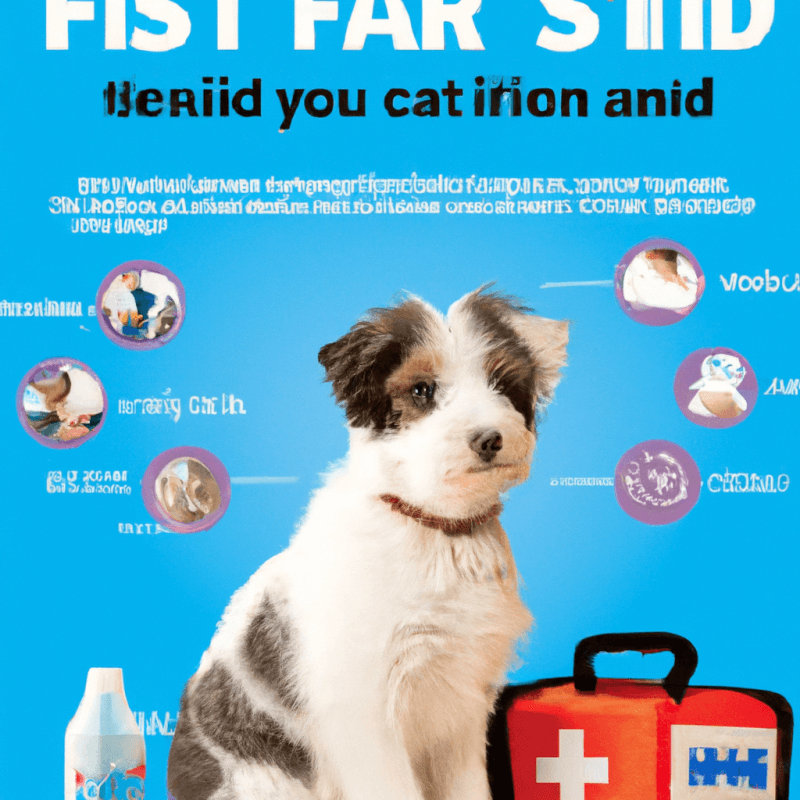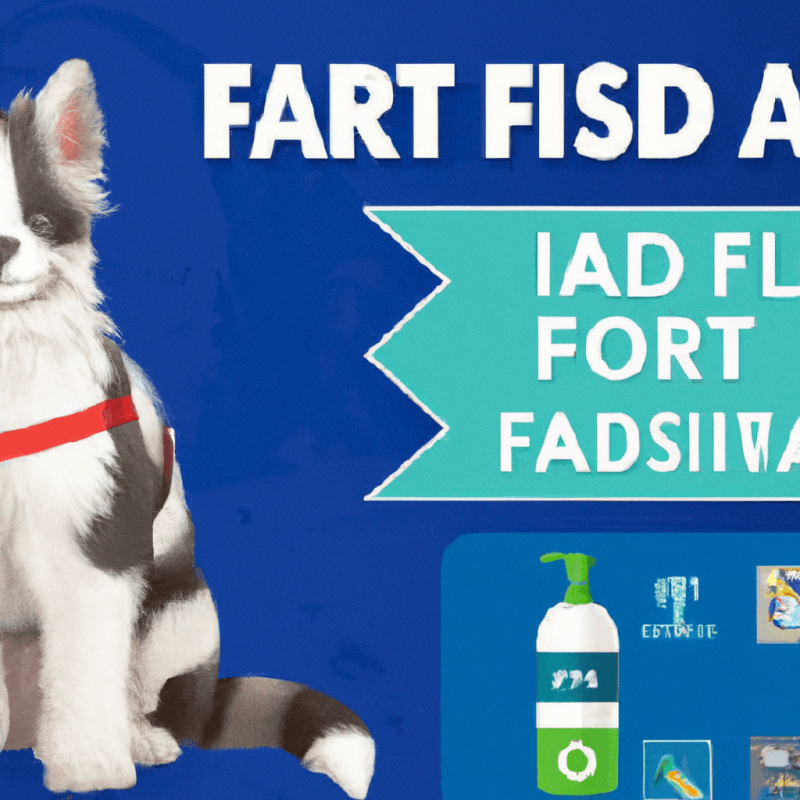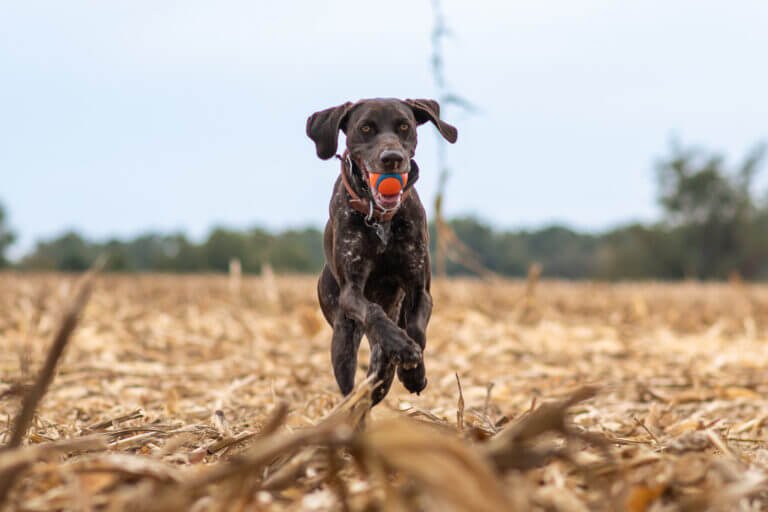If you have a furry friend at home, it’s important to be prepared for any unexpected emergencies. Just like humans, pets can also have accidents or fall ill, and having a pet first-aid kit on hand can be a lifesaver. But what exactly should you include in this essential kit? From bandages and antiseptic to emergency contact information, read on to discover the must-have items that will help you ensure the well-being of your beloved pet in times of need.

Essential Items
When preparing a pet first-aid kit, there are several essential items that you should have on hand. These items are the building blocks of any good first-aid kit and will help you address minor injuries and emergencies. Some of the essential items you should include are:
Ready for Cat Trivia?
Test your knowledge about cats!

Bandages
Bandages are essential for covering wounds and controlling bleeding. You should have a variety of sizes and types, including self-adhesive bandages, gauze rolls, and adhesive bandage strips. These will come in handy for wrapping wounds securely and preventing further injury.
Antiseptic solution
To prevent infection in cuts and wounds, it’s important to have a quality antiseptic solution in your first-aid kit. Look for a solution that is safe for pets, such as chlorhexidine. This will help clean the wound area and reduce the risk of infection.
Gauze pads
Gauze pads are ideal for cleaning wounds and applying medication or antiseptic solution. They are highly absorbent and can help control bleeding. It’s a good idea to include both sterile and non-sterile gauze pads in your first-aid kit.
Adhesive tape
When securing bandages or gauze pads, adhesive tape is indispensable. Opt for a waterproof, hypoallergenic tape that will stay in place even if your pet gets wet or becomes active. This will ensure that the bandages stay on and provide proper coverage.
Scissors
Scissors are essential for cutting bandages, tape, and any other materials needed in a first-aid emergency. Be sure to choose scissors with rounded edges to prevent accidental injury to your pet.
Tweezers
Tweezers are useful for removing splinters, thorns, or other foreign objects from your pet’s skin. Make sure you choose a pair with pointed tips for better precision. Remember to clean and disinfect the tweezers after each use.
Digital thermometer
A digital thermometer is a must-have item for monitoring your pet’s temperature. Fever can be a sign of illness or infection, so it’s important to have an accurate thermometer to assess their condition. Look for thermometers specifically designed for pets, as they are typically more reliable.
Sterile saline solution
Sterile saline solution is crucial for flushing out wounds or cleaning your pet’s eyes. It is gentle and soothing, making it safe to use in sensitive areas. Having a bottle of sterile saline solution in your first-aid kit will help keep your pet’s eyes and wounds clean.
Disposable gloves
Disposable gloves are essential for protecting yourself and your pet during first-aid procedures. They act as a barrier against bacteria and prevent the spread of infection. Latex or nitrile gloves are recommended, but it’s important to check for any allergies before using them.
Cotton balls
Cotton balls are versatile and can be used for various purposes in a pet first-aid kit. They can be used to apply medication, clean wounds, or remove debris from your pet’s eyes. Stock up on these soft, gentle cotton balls to ensure you are well-prepared for any situation.
Medications and Ointments
In addition to the essential items, there are certain medications and ointments that can be useful in a pet first-aid kit. These can help alleviate common symptoms and provide temporary relief while you seek veterinary care. Here are some medications and ointments you should consider including:
Hydrogen peroxide
Hydrogen peroxide is a useful tool for inducing vomiting in cases of accidental ingestion. However, it should only be used under the guidance of a veterinarian, as certain substances can be harmful if vomited back up. It’s best to consult a professional before using hydrogen peroxide in an emergency situation.
Antibiotic ointment
Antibiotic ointment is an effective way to prevent infection in minor cuts and wounds. Be sure to choose an ointment that is safe for pets and does not contain any ingredients that can be toxic if licked. Apply a thin layer to the affected area after cleaning it with an antiseptic solution.
Antihistamine
If your pet experiences an allergic reaction or insect bite, having an antihistamine on hand can help alleviate symptoms until you can get them to a veterinarian. However, it’s crucial to consult your vet beforehand to determine the right dosage and type of antihistamine for your pet.
Eye drops
Pets can sometimes develop eye irritations or infections, and having eye drops in your first-aid kit can provide temporary relief until you can seek professional help. Be sure to choose eye drops that are specifically formulated for use in pets.
Activated charcoal
Activated charcoal can be used in cases of accidental poisoning to absorb toxins and prevent their absorption by the body. However, it is important to consult a veterinarian before administering it, as the dosage will vary depending on the size and weight of your pet.
Tools and Equipment
Having the necessary tools and equipment in your pet first-aid kit can make it easier to address emergencies and provide immediate care to your furry friend. Here are some tools and equipment to consider including:
Tick remover
Ticks can transmit diseases to your pet, so having a tick remover in your first-aid kit is essential. This tool allows you to effectively remove ticks without leaving behind any mouthparts, reducing the risk of infection.
Nail clippers
Long nails can be uncomfortable for your pet and may lead to injury or difficulty walking. Keeping a pair of nail clippers in your first-aid kit will allow you to trim your pet’s nails if necessary.
Pet carrier
In case of an emergency, having a pet carrier on hand is crucial for safely transporting your pet to a veterinary clinic. Choose a carrier that is sturdy, well-ventilated, and comfortable for your pet.
Blanket
A blanket can serve multiple purposes in a pet first-aid kit. It can be used to keep your pet warm, provide comfort, or even act as a makeshift stretcher in case of a serious injury. Choose a lightweight and washable blanket for convenience.
Muzzle
In stressful situations or emergencies, even the most well-behaved pets may become fearful or agitated. Having a muzzle readily available in your first-aid kit can help prevent accidental bites and ensure the safety of both you and your pet.
Emergency Contact Information
In any pet first-aid kit, it is essential to have relevant contact information readily available. This will help ensure that you can quickly and efficiently seek professional help when needed. Here are some important contact details to include:
Vet’s contact details
Keep your veterinarian’s contact information handy in case of an emergency. Include their phone number, address, and after-hours contact information if applicable. This will allow you to reach out for guidance or schedule an urgent appointment.
Animal poison control hotline
Accidental poisoning can happen, so it’s crucial to have the contact information for your local animal poison control hotline. They can provide assistance in case your pet ingests something toxic and guide you on the necessary steps to take.
Emergency vet clinic
In situations where your regular veterinarian is unavailable or cannot provide immediate care, it is important to have the contact information for the nearest emergency vet clinic. They are equipped to handle critical cases and provide 24/7 veterinary care.

Additional Supplies
While the essential items, medications, and tools mentioned above form the core of a pet first-aid kit, there are a few additional supplies that can further enhance your preparedness and comfort in emergency situations. Here are some additional supplies to consider:
Pet-specific first-aid book
Including a pet-specific first-aid book in your kit can provide valuable guidance in case of an emergency. It will offer step-by-step instructions, illustrations, and useful tips to help you handle various injuries and emergencies effectively.
Emergency blanket
An emergency blanket is designed to retain body heat and provide insulation. This can be particularly useful if your pet is injured or in shock, helping to keep them warm until they can receive proper medical attention.
Leash and collar
In an emergency, it’s crucial to have a leash and collar readily available to secure your pet and prevent them from running off. This will ensure their safety and make it easier to transport them when needed.
Pet food and water
In the event of an emergency or if you find yourself stranded, having a small supply of pet food and water can be a lifesaver. Pack a few days’ worth of your pet’s regular food, as well as portable water bottles or a collapsible water bowl.
Medical records and ID tags
Including your pet’s medical records and identification tags in your first-aid kit is important. In case of an emergency, these documents can provide crucial information to veterinary professionals or animal control agencies, ensuring that your pet receives the appropriate care.
Creating a Pet First-Aid Kit
Now that you know the essential items, medications, tools, and additional supplies to include in a pet first-aid kit, it’s time to put it all together. Follow these steps to create a comprehensive and effective kit:
Choose a suitable container
Select a container that is durable, waterproof, and easily accessible. A small, sturdy plastic box or a portable bag with compartments can be great choices. Consider labeling the container as a “Pet First-Aid Kit” for easy identification.
Label the contents
Once you have gathered all the items, make sure to label each one. Clearly mark the purpose of each item and ensure that everything is easily identifiable and distinguishable. This will help you quickly locate the necessary supplies during an emergency.
Check and replace supplies regularly
Regularly inspect your pet first-aid kit to ensure that all items are in good condition and have not expired. Check medication labels for expiration dates and replace any used or expired items promptly. It’s also a good idea to take note of any items that are running low and restock as needed.
Keep the kit in an accessible location
Store your pet first-aid kit in a location that is easily accessible. This could be a designated cabinet, a top shelf in a closet, or even in your car, especially if you frequently travel with your pet. Ensure that everyone in your household knows where the kit is located and how to use it.

Educating Yourself
Having a well-stocked pet first-aid kit is just the first step. It’s important to educate yourself on basic first-aid procedures and become familiar with common pet emergencies. This knowledge will help you remain calm and respond appropriately in a crisis. Here are some ways to educate yourself:
Get basic first-aid training
Consider taking a pet-specific first-aid and CPR course. These courses are often available online or through local animal organizations. They will provide you with valuable skills and knowledge to handle emergency situations effectively.
Learn about common pet emergencies
Research and familiarize yourself with the most common pet emergencies, such as choking, poisoning, heatstroke, and bites/scratches. Understanding the signs and symptoms of these emergencies will enable you to act quickly and appropriately.
Know the signs of distress and when to seek professional help
Learn to recognize signs of distress in your pet, such as difficulty breathing, sudden lethargy, or severe pain. Understanding when to seek professional help is crucial, as some emergencies require immediate veterinary care. Trust your instincts and never hesitate to contact your veterinarian or emergency clinic when in doubt.
Using the First-Aid Kit
In the event of an emergency, it’s important to remain calm and assess the situation carefully. Here are some steps to follow when using your pet first-aid kit:
Be calm and assess the situation
Remaining calm is vital during an emergency. Take a deep breath, assess the situation, and prioritize the safety of both you and your pet. Quickly evaluate the severity of the injury or illness to determine the appropriate course of action.
Follow instructions for each item
Refer to your pet-specific first-aid book or any included instructions to use the items in your kit correctly. Understanding proper techniques for applying bandages, administering medication, or cleaning wounds will minimize the risk of further injury.
Contact your vet if unsure
If you are unsure about how to proceed or believe that professional help is necessary, contact your veterinarian. They can provide guidance over the phone and advise you on whether your pet needs immediate veterinary care.
Seek immediate veterinary care for serious injuries
In the case of serious injuries, such as deep cuts, broken bones, or severe bleeding, it is crucial to seek immediate veterinary care. Do not attempt to treat these injuries on your own, as your pet may require advanced medical attention.

Considerations for Traveling
When traveling with your pet, it’s important to be prepared for emergencies that may occur on the road. Here are some considerations to keep in mind when traveling:
Pack a portable first-aid kit
In addition to your regular pet first-aid kit, pack a smaller, more portable version to take with you while traveling. This way, you’ll always have essential supplies on hand, even when away from home.
Research emergency vet clinics in the area
Before embarking on a trip, research emergency veterinary clinics along your route or at your destination. Note their contact information and ensure that they are easily accessible in case of an emergency.
Update your pet’s identification
Before traveling, make sure your pet’s identification tags are up to date. Include your current contact information, as well as an emergency contact number if possible. This will help ensure a swift reunion in case your pet gets lost during your trip.
Conclusion
A well-prepared pet first-aid kit is a crucial resource in keeping your pets safe and healthy. By including essential items, medications, tools, and additional supplies, as well as educating yourself on basic first-aid procedures, you can be better equipped to handle emergencies with confidence. Remember to regularly check and restock your kit, keep emergency contact information readily available, and update your pet’s identification when traveling. With a comprehensive pet first-aid kit at your disposal, you can provide immediate care to your beloved pet until professional help is available.



